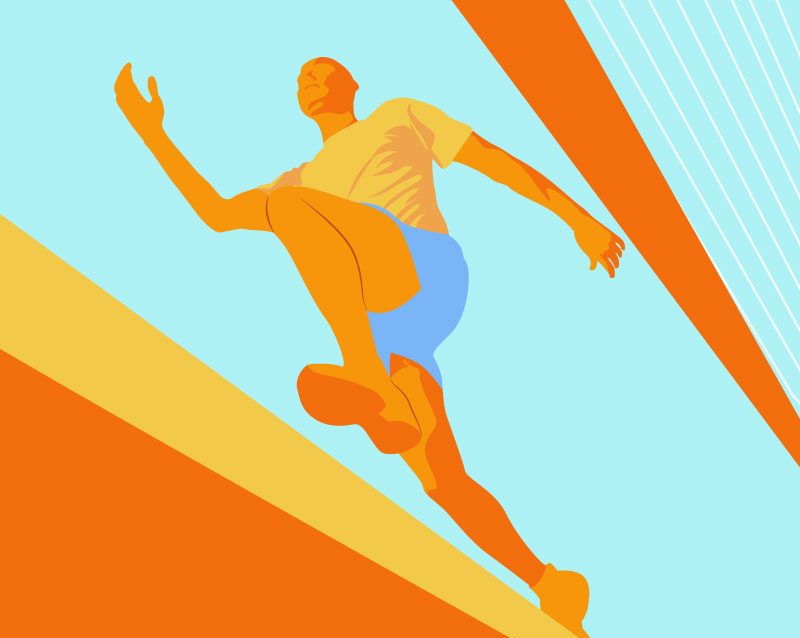December is a natural time for us to reflect on the past year and plan for the year ahead. It can also be the time when we think about the determinations we set and why some seem to take longer to fulfill than others.
After all, Nichiren Daishonin promises: “Though one might point at the earth and miss it, though one might bind up the sky, though the tides might cease to ebb and flow and the sun rise in the west, it could never come about that the prayers of the practitioner of the Lotus Sutra would go unanswered.”[1]
Whether we are reading this at the end of November or with two days remaining until the New Year, we have the agency to refresh our determination once more to fulfill our goals, to not give up on our dreams.
Ikeda Sensei once shared with youth the Gosho passage that supported him in every struggle he faced:
If in a single moment of life we exhaust the pains and trials of millions of kalpas, then instant after instant there will arise in us the three Buddha bodies with which we are eternally endowed. Nam-myoho-renge-kyo is just such a “diligent” practice.[2]
About this passage, Sensei explains, “I have overcome everything and triumphed completely by chanting with an intensity to compress all eternity into a single moment of life.”[3]
To exert a hundred million eons of effort in each moment means giving our whole heart, holding nothing back, for our happiness and the happiness of others. It is the spirit of “going all in” toward our goals and dreams and testing the power of our faith and practice.
Below are the three keys to help us bring that spirit to life: decide, pray and take action.
1. DECIDE ‘Simply Make up Your Mind’
Sometimes we want one thing, but we hesitate or doubt we can achieve it. Nichiren cautions that “an individual at cross purposes with himself is certain to end in failure.”[4]
Sensei says of this passage:
Certainly, nothing meaningful can be accomplished by a person conflicted, or of two minds, about which course to pursue. That only stands to reason. If we cannot make up our minds, we cannot have firm resolve. We will be swayed by our environment and lose our direction.[5]
The first battle, then, is internal. In a well-known passage, Nichiren Daishonin writes to his disciple Yasaburo: “You must simply make up your mind. Look at the world this year as a mirror. The reason that you have survived until now when so many have died was so that you would meet with this affair.”[6]
When we align our heart and mind in a single, resolute determination to win, we are in essence making up our mind to achieve victory.
2. PRAY Chant With Conviction Rooted in a Vow
Second Soka Gakkai President Josei Toda once gave this simple, yet profound guidance about whether all prayers are answered: “A strong prayer to the Gohonzon is certain to be realized. There are three conditions, however: daimoku, daimoku and more daimoku!”[7]
Our time in front of the Gohonzon is a ceremony in which we fuse our life with the universe and bring forth the limitless reservoirs of courage, wisdom and compassion that lie within us. How we pray to the Gohonzon is important.
President Toda once offered the analogy of striking a bell. The sound the bell makes greatly differs depending on whether you use a toothpick, a chopstick or a bell striker. While the bell is the same, the more powerfully you hit it, the more powerfully it sounds.[8]
Sensei writes of this sort of prayer as “fighting daimoku”:
It is up to each person who chants Nam-myoho-renge-kyo to wage an individual struggle to dispel the darkness in his or her life. Because this darkness arises from our inner delusion, the struggle to defeat it must be waged within. In short, this struggle means persevering in faith. Based on the Lotus Sutra, which reveals the Buddha’s enlightenment, the Daishonin discovered the workings of the fundamental Law of Myoho-renge-kyo in his own life; he then went on to confirm and prove its power through his own life struggles. For us to freely manifest the workings of the Law in our own lives, we need to chant with the same mind and attitude as the Daishonin. In other words, our chanting of Nam-myoho-renge-kyo—the daimoku—must be based on faith, the spirit to battle fundamental ignorance. The daimoku that the Daishonin spread could be described as “fighting daimoku.”[9]
When we chant with this conviction, we can not only widen our life’s path, we can blaze news ones. The underlying purpose of all our prayers is the vow we share with our mentor to actualize kosen-rufu. Sensei writes of this:
To change our karma, achieve human revolution, and attain Buddhahood in this lifetime, we need to pray with a vow to dedicate our lives to kosen-rufu. This is the pivot that transforms our lives into the great lives, the great life state of the Bodhisattvas of the Earth. …
Therefore, even when you pray to overcome your own problems and worries, or to fulfill your wishes, do so with the determination that it be for the sake of kosen-rufu, to demonstrate remarkable proof of your practice. … It’s crucial that a vow for kosen-rufu be the foundation of your prayers.”[10]
3. TAKE ACTION Make Every Possible Cause
Nichiren Daishonin cites a sutra that states that if you want to understand what the future will be like “look at the causes that exist in the present.”[11]
Buddhism is a cause-based practice, in which our future is created not by waiting, but by taking continual action for kosen-rufu with a firm determination and prayer to win. In other words, it is through the causes we make day in and day out, that we can propel everything forward, creating momentum for our human revolution and bringing forth the life state of the Bodhisattvas of the Earth. Sensei reiterated this message:
Please be assured that everything we do for kosen-rufu—including reciting the sutra and chanting Nam-myoho-renge-kyo and all our Soka Gakkai activities—becomes a source of benefit and good fortune for ourselves and for our families and forms the vital “roots” that allow happiness to thrive.[12]
He continues:
I also hope you will always engage in activities with a positive attitude. And please keep not only the aims of the organization but your own personal aims clearly in view. Then chant and take action wholeheartedly to realize them and transform your various sufferings and problems. To win in the realm of kosen-rufu is to win in life. To find joy in our activities is to find joy in life.[13]
Each cause we make—encouraging a friend, attending our discussion meeting, introducing someone to Buddhist practice—becomes a seed of benefit and joy in our own lives.
Sensei assures us that engaging in such a practice calls forth the protective functions in the universe, saying, “This is an assurance that the protective forces of the universe will safeguard all who devote themselves to kosen-rufu with unshakable commitment.”[14]
Make a Fresh Determination
Every day is an opportunity to “go all in,” which, in essence, means to fundamentally believe in the power of our own life. Even if we didn’t win yesterday, we can start fresh from today. With even a single hour remaining in 2025, we still have time to make a fresh determination to realize our dreams for ourselves, our loved ones and for kosen-rufu. The key to achieving victory, then, is to courageously rise up one more time, and always one more time.
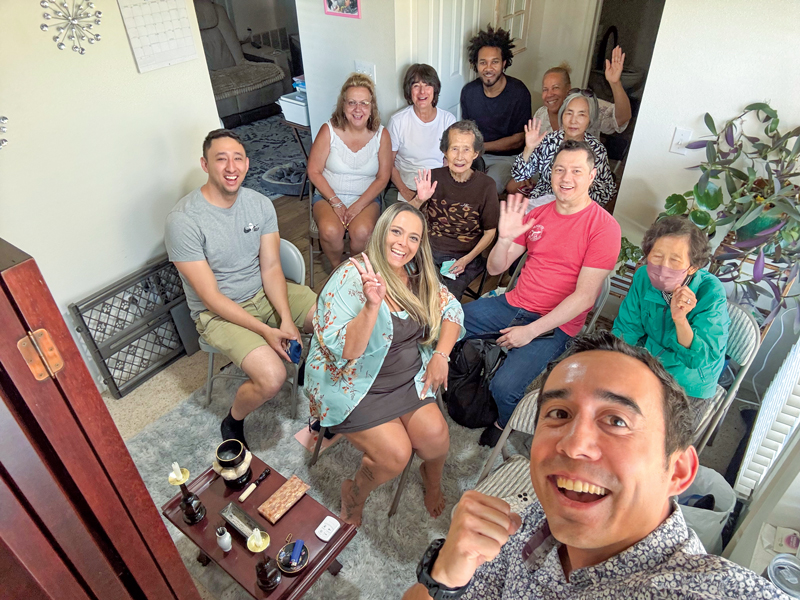
I Choose Life
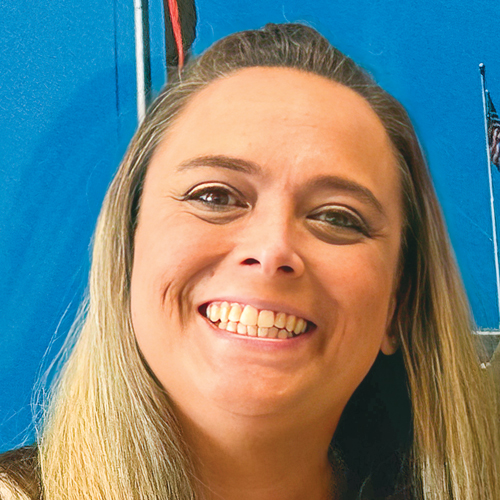
Amber Morton / Denver
Living Buddhism: Thank you for sharing your story with us, Amber. You grew up in the SGI. What was that like?
Amber Morton: Both of my parents were very involved in SGI activities, so when we weren’t home, we were usually at our local Buddhist center. I enjoyed doing activities because I got to see my friends. But as a teenager, my priorities shifted. Like many teens, I started distancing myself from my parents. At 17, I began living on my own. That really halted my practice because I lost connection with the SGI. That period lasted for about 10 years.
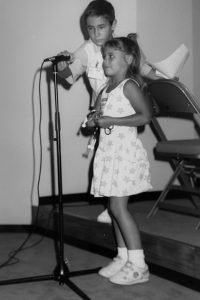
How did you start practicing Buddhism again?
Amber: It’s been a journey. Around 2010, I fell and broke my ankle. I couldn’t work, and I stopped going out to see my friends. I became very lonely and depressed. When they finally took the pins out of my ankle after four months, I started feeling increasing pain and thought I was dying. Lying in bed a few days after the surgery, the pain prompted me to start chanting intensely out loud. When I went to the doctor, they told me that I had developed blood clots, the kind that were often fatal. I realized how protected I was and the enormous power of prayer.
From that point, I started attending a few meetings here and there, supported by the women’s division members who reached out to me. Then, around the time of the 50,000 Lions of Justice Festival in 2018, I received the Gohonzon. With my parents’ encouragement, I attended the festival that September in Phoenix. That’s when I started to regularly attend discussion meetings. But my biggest obstacle came in 2021.
What happened then?
Amber: Exacerbated by the pandemic, I started drinking heavily, which in 2021 led to my first liver failure due to alcohol addiction. My dad took me in, and I began doing gongyo with him twice a day and became more active in the SGI. I even took on leadership! I was sober for 14 months when doctors told me my liver was functioning normally. I took that as a sign that I could drink again, and within three months, I was back to drinking every day. I tried to stop but couldn’t.
In October 2024, I was told that my liver was failing again and that I had only a 25% chance of surviving without a transplant. I had to make a decision: continue drinking or choose to live. A few of my friends had died from alcohol addiction, and I decided this wasn’t going to be my story. I chose to dedicate myself fully to my Buddhist practice and transform my life.

What did that decision look like?
Amber: There were many times that I felt like I had let people down. Many times, I was too hungover, or impaired, to go to a meeting I’d promised to attend. But once I decided to win, I challenged myself to take a step forward no matter how I felt. For example, even if I was not feeling well, I would attend district meetings.
I started thinking about who I would impact if I died. I began living not just for myself, but for others—living to fulfill my mission. I began studying on my own and chanting with deeper focus.
What really accelerated my progress were my co-leaders, family and friends in faith, who never shamed me or made me feel bad. They welcomed me back with open arms. Their support helped me realize how precious my life is.
What would you say is the difference between half-heartedly practicing and wholeheartedly practicing?
Amber: Any amount of practice is beneficial because mine led me to where I am today, so I’m grateful for my entire journey. But deciding to make faith a priority has completely changed my life.
Before this, without realizing it, I was just going through the motions. I would chant, but often be on my phone at the same time. I didn’t have the confidence I could influence another person’s life. I felt better mentally, but I wasn’t receiving the kind of benefits Ikeda Sensei talks about.
Now, when I chant, I put everything else aside. I set clear determinations and focus wholeheartedly. I study Buddhism regularly and approach everything with a sense of mission. Naturally, I’m sharing Buddhism with everyone I meet, and now my benefits have been overflowing, so much that I feel like I need to turn the benefit faucet off!
[Editor’s note: Second Soka Gakkai President Josei Toda once said: “The benefit of doing the Buddha’s work is great. That benefit will come spilling out when you need it. It’s like a water faucet. … When the need arises, you just turn on the tap. Rest assured that you’ll attain a state of life endowed with such a vast reservoir of benefit” (October 16, 1998, World Tribune, p. 11).]

What has been your greatest benefit?
Amber: I have been sober since October 2, 2024, and I’m focusing on healing the trauma that led to my addiction. I went back to college in May after hearing an experience from a women’s division member who returned to school in her 40s. I’ve been traveling, attended the Florida Nature Culture Center this year and bought a new car for the first time since 2011. I feel gratitude and appreciation for my life every day.
Now more than ever I’m changing my karma into mission. Through all my ups and downs, my mission of happiness for myself and everyone has become clearer.
But as a chapter women’s leader, seeing so many members overcome their challenges and sharing this Buddhist practice has by far been the most inspiring experience for me. Since making my determination last October to choose life, I have awakened to my true strength.
I now recognize that I am the entity of the Mystic Law and have the power to transform my life. I feel an even stronger desire to help others see that they can too. For the first time, I feel like I’m fully living.

The Cause to Stand Up
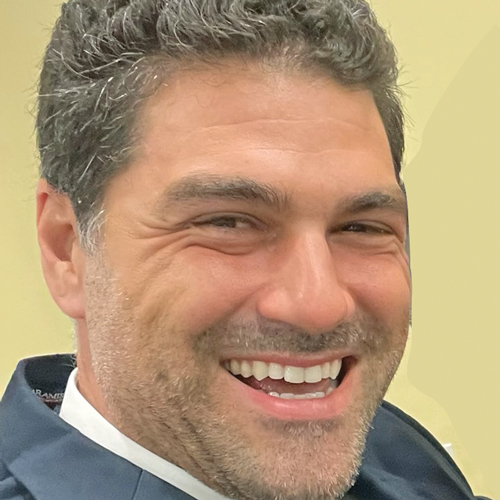
Arthur Pugliese / Boca Raton, Florida
Living Buddhism: Hi Arthur. Thank you for sharingyour story about breaking through by going “all in.” What were you struggling with at the time?
Arthur Pugliese: About a year ago, my family life was filled with tension. My wife and I were constantly arguing, which caused emotional strain. We have three kids—7, 4 and 2—and my oldest, Kaia, began suffering from night terrors. I felt like we were living in an igloo in Florida—our home was cold, silent and joyless. I worried deeply about my family’s happiness and future. I became overwhelmed by the challenges at home, and though I didn’t admit it at the time, it became an excuse to let my fighting spirit for kosen-rufu wane.

What do you mean by that?
Arthur: With three kids, life is nonstop and consumed with pickups, drop offs, activities, birthdays. In my mind, I was already overwhelmed and there was no time for SGI activities. But my life felt stuck. I knew that I had hit a wall. I had to choose: Am I going to be weak, or am I going to be strong? I decided that I had to become strong in faith.
I’m sure many people can relate to feeling overwhelmed by life’s demands. What changed for you?
Arthur: I sought guidance from my men’s leader, who reminded me of Ikeda Sensei’s guidance that to transform my karma, I had to challenge shakubuku! I couldn’t let the karma of family dysfunction continue to repeat across generations. So I made a vow: to win through shakubuku, not just as an activity, but as the key to transforming my life from the inside out. I started waking up at the crack of dawn to chant more. As a new district men’s leader, I determined to raise a courageous, capable young man through shakubuku.

How did that determination change your daily life?
Arthur: It pushed me to look inward. What were my values and what was important to me? There were things pulling me in many directions, so I chanted to create the most value from my competing demands managing my own business, being very involved with my kids and supporting my community.
When I put kosen-rufu in the center of my life, it created space for everything else. For example, I committed to doing a King Castle Group shift every month, something I used to say I didn’t have time for. I also deep-cleaned my altar the other day, wanting it to shine for the members coming to the discussion meetings held at our home. These may seem like small things, but they reflected a genuine shift in my heart.
Can you explain that shift a little more?
Arthur: It’s been a step-by-step process, but I realized I was lacking life force. You need life force to expand. Once I decided to take full responsibility for my life and respond to my mentor, everything came into focus. I made up my mind to do my activities and my human revolution joyfully, not begrudgingly.
On a deeper level, because I committed to introducing a youth to this practice, I knew I had to embody correct faith. I began to chant fierce daimoku to defeat the negativity within my life. Soon after, I met a 19-year-old young man named Hugues, outside his workplace. We struck up a conversation about life. He started attending meetings and I determined to build a real friendship with him. I stayed connected, chanted for his happiness, sent him encouragement and soon my life began to shift. In order to change my environment, I had to change.
What was the basis of that change?
Arthur: When kosen-rufu became my main focus, I started acting, thinking, and living with purpose, no longer letting situations control my life. As I changed, my environment responded.
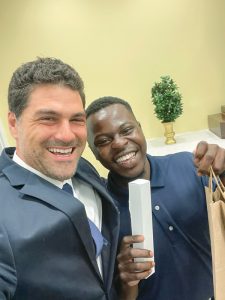
Were you chanting specifically about transforming your family?
Arthur: I had been chanting about creating a harmonious family, but to actualize it was very challenging. It still is to this day, but I realized that the key is to make sincere efforts daily—studying, reading, determining to do shakubuku, taking responsibility for my district, and uniting with my comrades in faith and my leaders. By doing those things, joy returned to my practice and life.
My wife and I began chanting and even exercising together again. We reconnected, not just as partners but as allies in faith. My daughter overcame her night terrors. Even my relationship with my parents improved.
And this July, Hugues received the Gohonzon! He is so sincere, doing every Soka Group shift. He has been receiving incredible benefits and deeply transforming his life. He was appointed a vice district young men’s leader and now, together, we introduce others to Buddhist practice!
Looking back, I see that my family challenges weren’t obstacles to my practice—they were the very cause for me to stand up in faith. And by doing so, I became someone who could help another person rise, too. That’s why I believe, with all my heart, that shakubuku truly changes karma.
From the December Living Buddhism
References
- “On Prayer,” The Writings of Nichiren Daishonin, vol. 1, p. 345. ↩︎
- The Record of the Orally Transmitted Teachings, p. 214. ↩︎
- You Can Do It!, p. 196. ↩︎
- “Many in Body, One in Mind,” WND-1, 618. ↩︎
- The Hope-filled Teachings of Nichiren Daishonin, pp. 211–12. ↩︎
- “Reply to Yasaburo,” WND-1, 829. ↩︎
- The Teachings for Victory, vol. 7, p. 23. ↩︎
- See Discussions on Youth, p. 298. ↩︎
- October Living Buddhism, p. 37. ↩︎
- The New Human Revolution, vol. 28, pp. 149–50. ↩︎
- “The Opening of the Eyes,” WND-1, 279. ↩︎
- NHR-26, pp. 87–89. ↩︎
- Ibid. ↩︎
- The Teachings for Victory, vol. 1, pp. 135–36. ↩︎
You are reading {{ meterCount }} of {{ meterMax }} free premium articles

